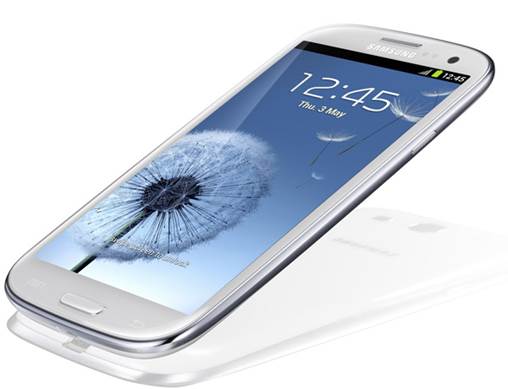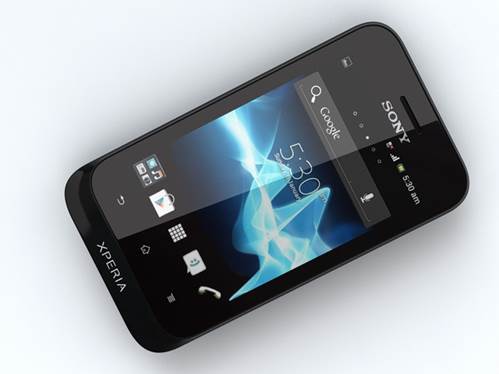The top-of-the-line smartphones
Here’s a list of some of the best available
in every price bracket.
$552 and above
Often advertised with PC-like
characteristics, huge screens and other premium features, such phones find many
takers in the market.
Our pick – Samsung Galaxy S3: This comes with the home-brewed Exynos Quad-Core processors based
on Cortex A9 cores and is one of the most feature-rich and powerful phones to
own. To top it all, there're a plethora of accessories that you can get from
the market.

Samsung
Galaxy S3
The alternative – LG Nexus 4: Although yet to hit the Indian market, it's one of the best-looking
devices on paper. It sports the most powerful mobile SoC (Qualcomm Quad-Core Krait).
Hopping on the Nexus bandwagon, LG has pulled a bunny out of the hat with its
state-of-the-art design and commitment to bleeding-edge updates directly from
Google. The only downside is the glass back cover, which is at risk if you drop
the phone, though for safety you can attach a back guard to protect it.
A worthy recommendation – Samsung Galaxy
Note 2: Not actually a tablet, this 12.7 cm (5”)
monster packs a lot of punch. With a gorgeous display and a pumped-up processor
(a higher-clocked variant of SGS3), the Note 2 brings you the best of two
worlds, allowing you to use the Spen for drawing and doing precise work with
ease. With its split screen and host of other features, the Note 2 is a great
device if you are fine with carrying around a huge screen. Accessories and
performance are also top-notch.
In the $370- 552 range
Our pick – HTC One X: With recent price cuts, the now more-affordable One X boasts of a
power-hungry Tegra3 processor and stupendous styling, with exceptional build
quality. With more than enough onboard storage and good performance, this is a
great device. Its only downside is that the processor heats up during heavy
workloads, such as gaming.
An alternative – Samsung Galaxy Nexus: Even though the device is quite old, it still holds its own in
almost every aspect. Powered by a dual-core TI chip, the Nexus can run the
latest games and provide smooth browsing even with image-intensive pages. The
generous 11.81 cm display with 720p stands up well to the competition. It’s
obvious advantage lies in the lease I developer support on custom ROM, and
relentless updates from Google for the latest OSs.

Samsung
Galaxy Nexus
In the $184 - 368 range
Our pick – LG Optimus L9: Stellar build quality and a huge display backed by the same
dual-core chip that powers the Galaxy Nexus, the LG L9 is a mainstream phone
that offers a huge display at a mainstream price point with respectable pixel
density. The 1 GB inbuilt RAM and the ability to expand storage via MicroSD is
a bonus. Except for the mediocre camera, everything in the phone is quite
‘happening’. A less skinned UI and developer support makes the phone a perfect
ft for its $330 price tag.
An alternative – Micromax Canvas 2 A110: Micromax has come out of the shadows and is now grabbing market share
with both hands. The firm not only shook up the whole market but now has
released products that outclass many of its competitors. The Canvas 2 is a gem
of a device; in fact, it's on par with the best in the market, yet provides a
compelling solution for $184.
With sound developer support, except for
the restricted and sketchy update path, Micromax has nothing going against it.
Specs-wise, it beats even phones priced above $275.
Under $184
Micromax Ninja 4 A87: This device has a 1 GHz Scorpion processor, expandable memory (4 GB
card bundled) and a 10.16 cm (4”) screen (233 ppi). The only downside is the
Android version, stuck at Gingerbread and the Ninja probably won't receive any
updates. However, if you don't care much about updates, it's hard to beat the
A87. At $110, it probably bests every other high-profile manufacturer in terms
of specs and offerings. The Ninja 4 is one great value for money phone.
An alternative – Sony Xperia Tipo: Loaded with ICS and a respectable 800 MHz processor, the Tipo is aimed
at the lower end of the market. There isn't much on offer except for the basics
of Android ICS. The only positive is the screen and acceptable performance for
day-to-day tasks. Do not expect phones under $184 to break world records.

Sony
Xperia Tipo
With Sony you can at least expect ‘some’
incremental updates for performance and bug fixes.